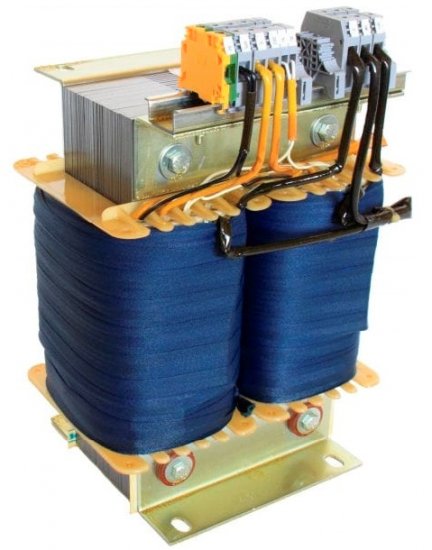Isolation transformers and their use
The safety issues regarding the power grid cannot be overstated. Take, for example, the familiar 220 volts. Under certain conditions, even this low voltage can be lethal, despite the fact that it is present in every modern outlet.
The main danger of a conventional contact is that sometimes it is not necessary to touch two wires of the network at the same time, sometimes it is enough to touch the phase that accidentally hit the device case while standing on the ground or holding a conductive battery with your hand. This is already enough to give you a cardiac arrest. To prevent such problems, isolation transformers are used.
An isolation transformer is a transformer whose transformation ratio is equal to unity, that is, the number of turns in the primary winding is equal to the number of turns in the secondary winding (n1 / n2 = 1). The function of such a transformer is to safely supply power to users of the electrical network.This is achieved by isolating the primary circuit from the secondary circuits, and the secondary circuit is generally not grounded to completely exclude the possibility of a secondary current being short-circuited in the direction of the ground.
The primary and secondary windings of the isolation transformer are galvanically isolated from each other by means of reinforced or double insulation or by installing a protective screen between the windings. Also, the coils are usually physically separated (separated into different parts of the magnetic circuit). And the wires with which the coils are wound have approximately the same or completely identical characteristics.
The secondary circuit, as noted above, is isolated from the ground loop — this is a key feature of an isolation transformer. And although the efficiency of the isolation transformer is in the region of 85%, it is considered suitable for the purpose of achieving safety, it is not for nothing that isolation transformers are also called «protection transformers».
Isolation transformers must be equipped with any rooms with special danger and high humidity, as well as places with increased safety requirements. For example, in the bathroom or sauna, the humidity is always high, there are usually many metal products with unstable grounding, water often flows, and in general the conditions are not suitable for using electricity in the presence of people.
Electrical appliances in such rooms can be installed only in certain areas, and contacts - only through an isolation transformer, and also only in a certain area of the room.Basements, wells, medical premises - these are the main contenders for the safe power supply of electrical appliances through isolation transformers.
But even when working with "safe" isolation transformers, certain rules must be observed. It is unacceptable to simultaneously touch two terminals of the secondary winding of the isolation transformer. Touching one of the terminals will not cause any danger because the circuit to the source of the dangerous EMF variable will remain open. But if you touch the two terminals of the secondary winding, it will be equivalent to a shock from a conventional (no isolation transformer) contact.
First round of isolation transformer must be equipped with an RCD… In no case should the cases of devices powered by an isolation transformer be earthed, because even in the event of a failure of the insulation to the case, the current should not be able to close to earth, and if the case is grounded, then there is risk of additional paths for the current, in this case it makes sense to use an isolation transformer will simply be lost.

